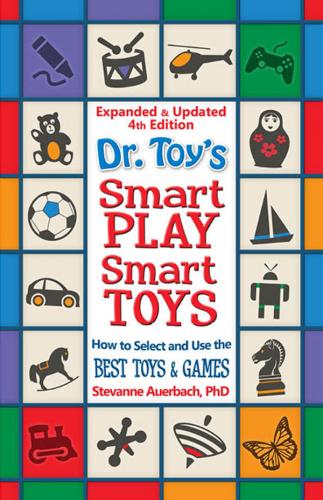Dr. Toy’s Tips on Selecting Toys
Dr. Toy’s Tips on Toy Safety
When selecting toys you want to be certain that all safety standards have been met. Check that the toy’s age range on the package is appropriate for your child.
Make a note about the manufacturer and the name of the product in your Playbook (described in greater detail later in this chapter). If the company has a customer-service number, jot it down. If there is any problem later you can report it or call for replacement information.
Be especially careful about objects designed for children under three years. Protect your baby and toddler in every way, not only with the toys you buy, but also with tiny things in the house that can be grabbed and put into the mouth.
The following tips are important; please review them carefully and keep your child’s safety in mind at all times.
Problems with a toy should be brought to the store’s attention. Tell the manager about any defects; the store will want to know. If the toy is faulty you should obtain a refund and/or be helped to locate a substitute. Remember to keep receipts.
Economics of Toys
Toys can be expensive. Buying good toys, however, does not have to cost a fortune if you select carefully. Purchasing a lot of things that only sit around unused makes no sense. You want interest and use. You want to be economical and buy smart. Use your time for wise toy buying. You can provide your child with many experiences that do not dent your pocketbook.
Dr. Toy’s Tips on Toy Safety
To make your child’s toys safe be sure to check for these potential problems before you buy a toy and recheck all of your child’s toys from time to time.
Some toys will be used over and over again and you will discover that these toys are meeting some special needs in your son or daughter. Items that become ragged with use over the years (with great resistance to their being replaced!) are often stuffed animals, a doll—perhaps a soft doll—and books. Activity toys like a loved tricycle, scooter or a wagon are often given up reluctantly as the child’s size increases.
Such playthings prorate to a negligible cost over the years, but more importantly, their value increases far beyond any dollar amount. For example:
In addition to toys, many objects around the house can be used for learning, such as measuring cups, pots and pans, wooden spoons, plastic bowls, or such complementary things as fabric, shells, and pinecones, which make for lots of merriment, and are accessible and inexpensive playthings.
For example, you can drape an intriguing, washable fabric on an old bridge table and create a great playhouse.
Shells and pinecones are great props for that handmade shack built on a desert island after a shipwreck.
The dining-room chairs, tip-tilted in strategic ways, form a wonderful castle or, perhaps, a cave, or a clubhouse.
Play itself does not cost money. Play is built on common sense spontaneity and imagination.
Toys Teach
Consider examples of the Ways Toys Teach:
